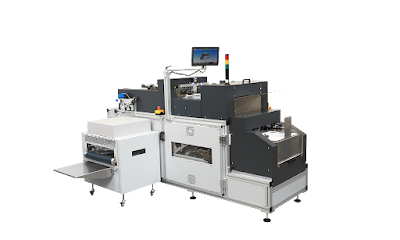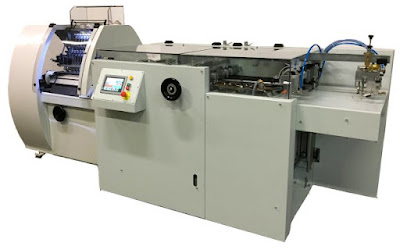Calibration, Characterization, and Enhancement
To the uninitiated, getting consistent, predictable and pleasing color from a printer or a press can feel like taming a wild beast. The interactions of calibrations, characterizations and individual image characteristics provide a wilderness of complexity where it easy to get lost. However, an organized, step-by-step, process can provide a roadmap through the wilderness to the paradise of perfect color reproduction.
Calibration
Calibration is the first step. Calibration is the process of adjusting an individual device to produce the individual colors at the levels intended by the manufacturer. This is done by printing a target consisting of a simple pattern of patches of increasing density. The Creo target shown below is a very common type of target for a CMYK device.
Each patch on the printed calibration target is measured with a densitometer, a device that measures the amount of light reflected from the surface of the paper. The calibration values are fed back into the printer so it can adjust the exposure or ink levels bringing the printer into calibration.
Because calibrations can be impacted by a wide variety of items including variations in ink viscosity, paper absorbency, temperature, and humidity, they should be checked frequently. Photographic printers should be checked several times per day. In a large offset print run, press sheets should be pulled and evaluated several times per hour. On the most sophisticated digital presses, a calibration strip is included on each sheet and each sheet is measured automatically.
Characterization
Characterization is often called profiling and provides the information about the way a device reproduces color including the breadth or gamut of color that is possible from the device. The resulting profile is used by the Color Management Module to provide the most accurate reproduction of color possible from the device. Proper characterization will allow images to be reproduced as consistently as possible across multiple devices and paper substrates.
To create a color profile, an IT8 color target, as shown below, should be printed on a fully calibrated printer. This target consists of 24 grey patches and 256 color patches which have been precisely defined by the American National Standards Institute. Each patch must be read by a spectrophotometer, a device which measures the reflectance of light across a wide spectrum of wavelengths. These values are fed into the software which creates the profile.
 |
| IT8 Target by Hugo Rodriguez |
Usually, a separate profile is required for each paper type on each output device, but the profiles can be used for as long as the device and substrate continue to be used together.
Image Enhancement
Once a color system is calibrated and characterized, the characteristics of individual images come into play. No camera system that currently exists can capture, and no printing system can reproduce, the full dynamic range of human vision. Image enhancement is required to adjust the colors in the image so the reproduction comes as close as possible to matching the human perception of the original scene. Some enhancements are global meaning they are applied to the image. Others are local, applied only to specific areas of images.
Professional photographers often enhance their images manually using tools in Adobe Lightroom or Photoshop. Higher volume image companies, including consumer photo companies and web retailers need tools which can automatically analyze and enhance images without human intervention.
One of the best tools for automatic image enhancement is Viesus, from Image Solutions. Automatic global enhancements in Viesus include color, brightness, contrast, sharpening, and noise reduction. Local enhancements include local brightness to lighten the foreground of backlit images or areas in deep shadows; sharpening of hair, eyebrows, and foliage; noise reduction on skies and skin; and specific color correction of skin, sky and grass.
This image lacks brightness and the colors seem muted and dead.
The same image after Viesus enhancement has a brighter face, sharper leaves and hair, and a livelier shade of green in the trees.
You might also like.
November in Columbia
You Would Even Say it Glows
How to View Stereo 3D Content
This post has also been published on the blog at Viesus.com.




















